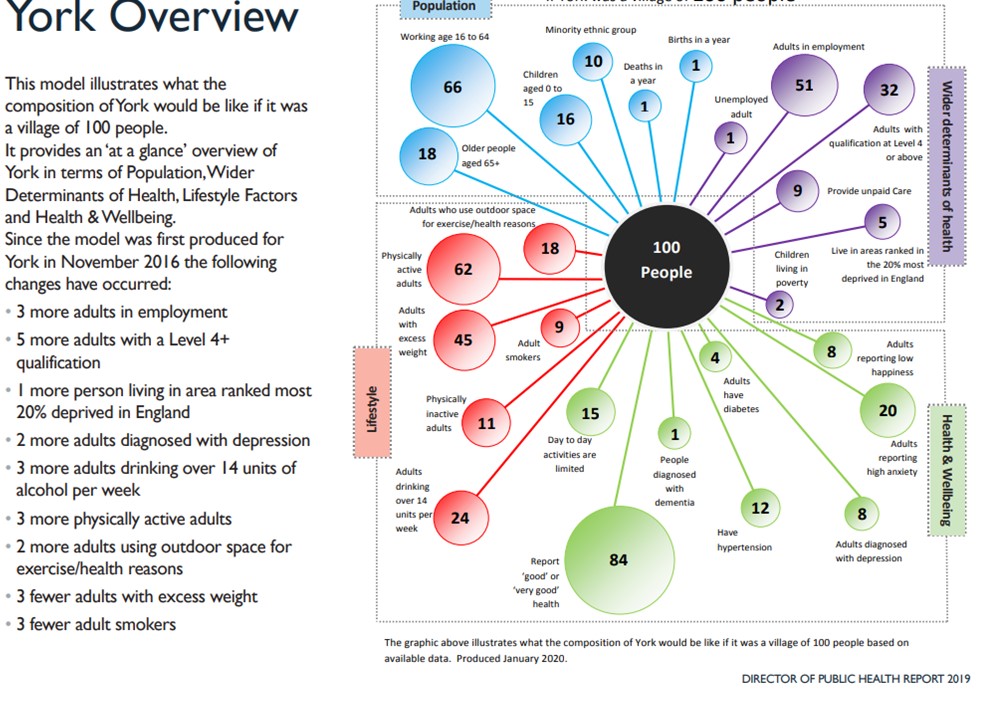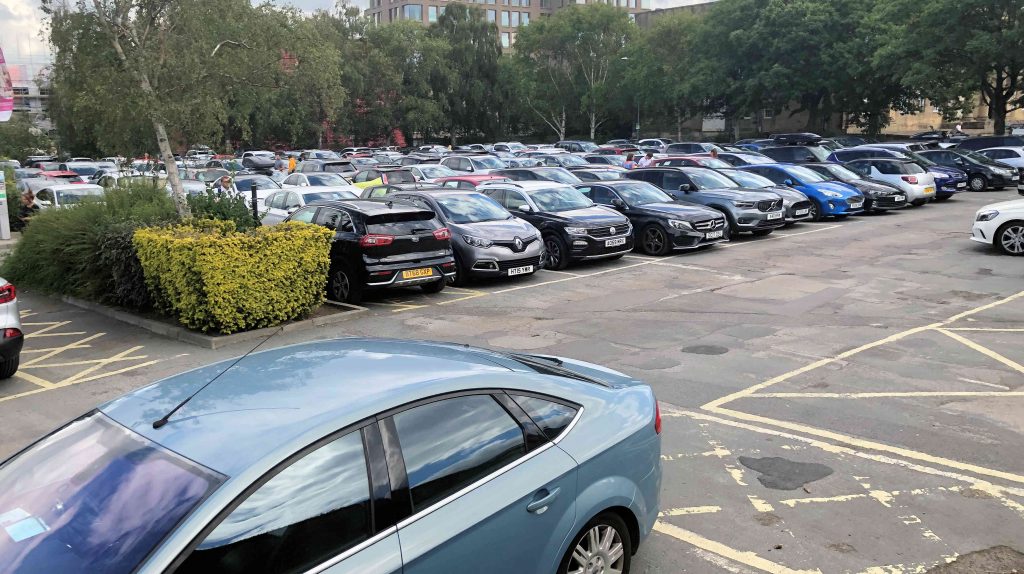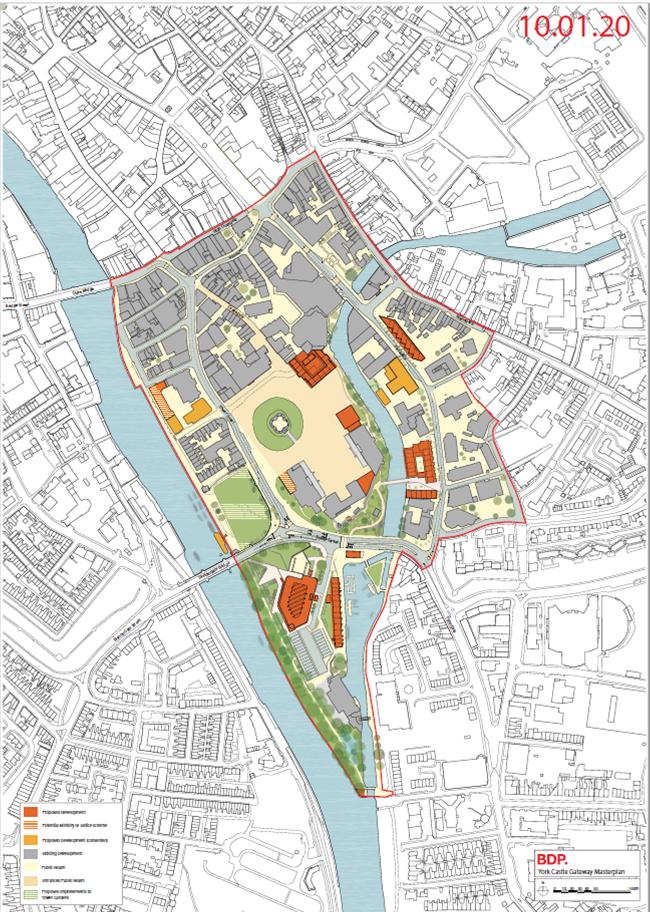Deaths and test results
Two further deaths announced today at the York Hospital Trust. One occurred on Tuesday and one yesterday.
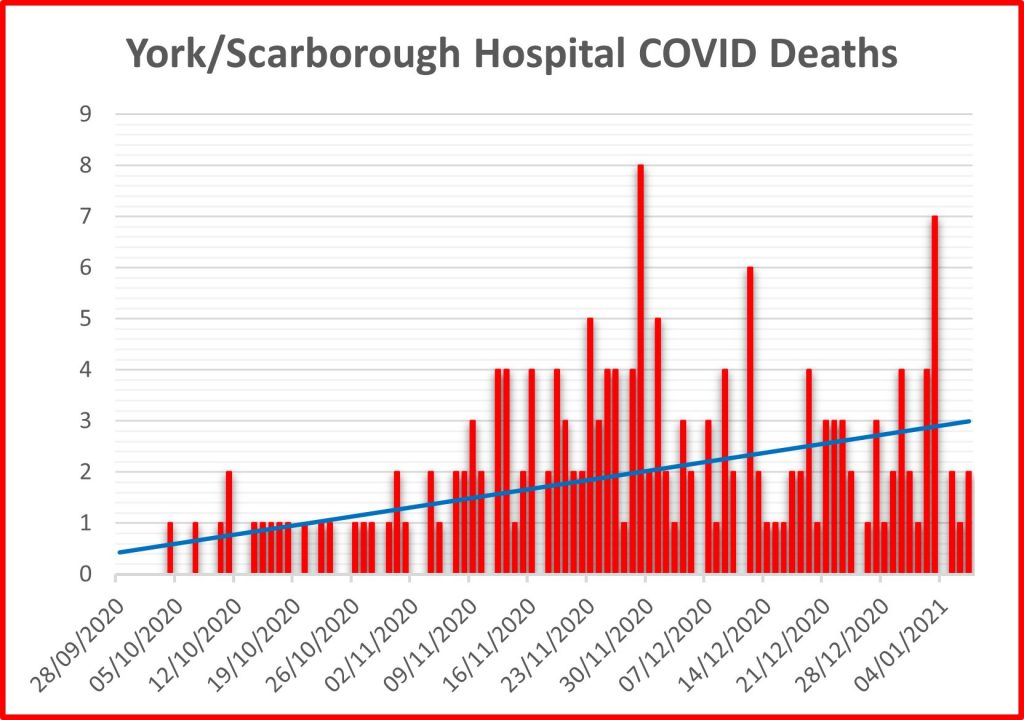
There have been TWO HUNDRED AND NINE new positive test results announced today. That brings the cumulative total to 8725.
244 cases were recorded on 4th January. That was a record high.
However there may be some very early indications emerging that the rate of increase in infection levels may be slowing.
The current infection rate is now 574.05
The current trend will see this increase to 626.28
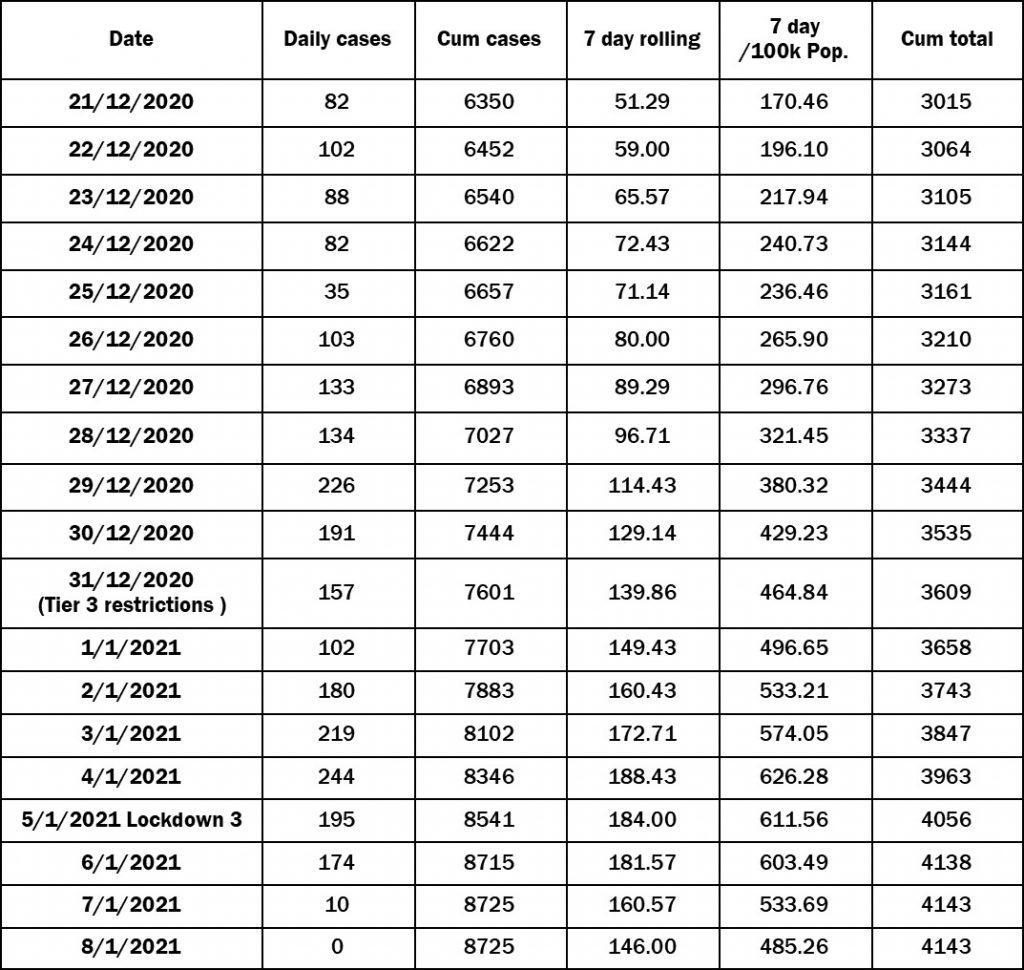
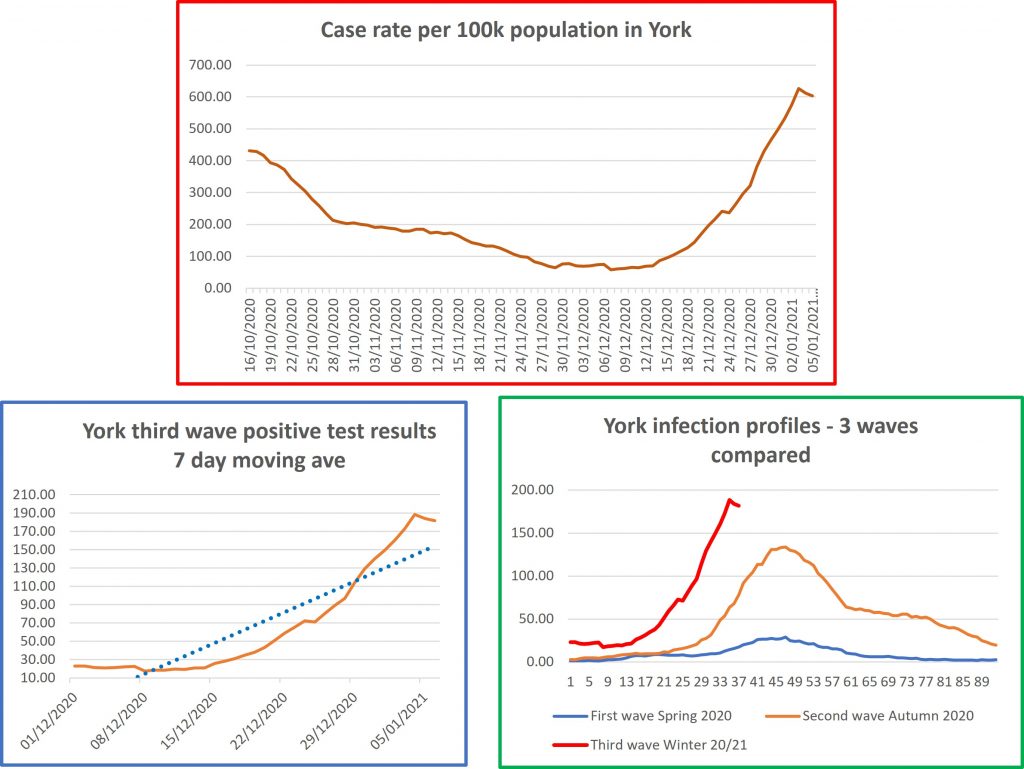
There has been the first – very small – reduction in case numbers in the Woodthorpe/Acomb Park neighbourhood.
There has been a sharp rise in the neighbouring Westfield and Acomb areas.
The latest figures are up to the 3rd January. Tomorrow (Saturday)we should see what we hope will be the peak when the figures for the 4th January are published.
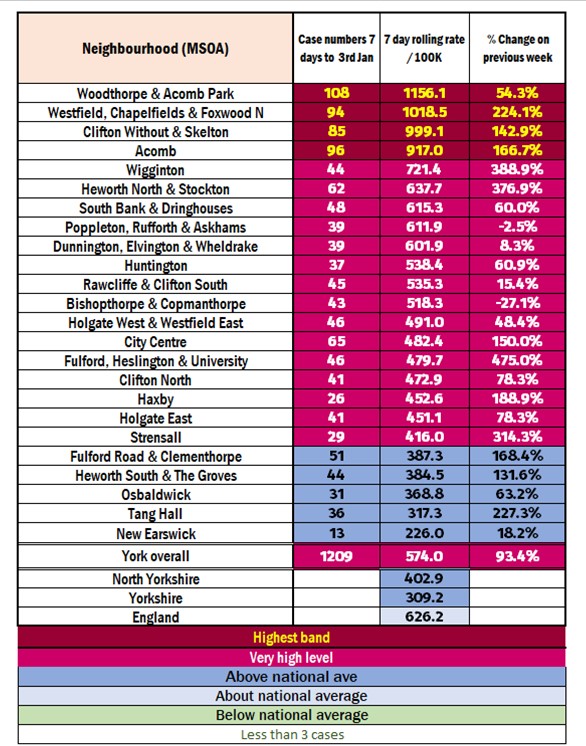
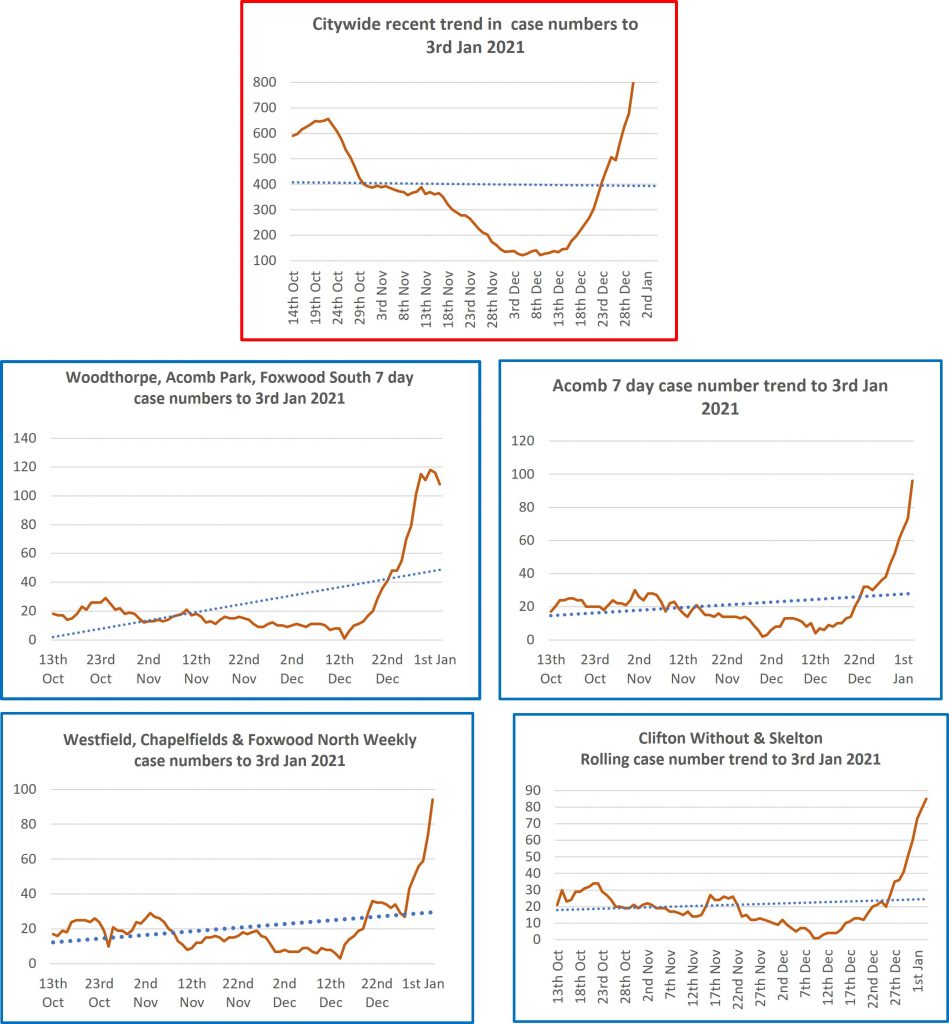
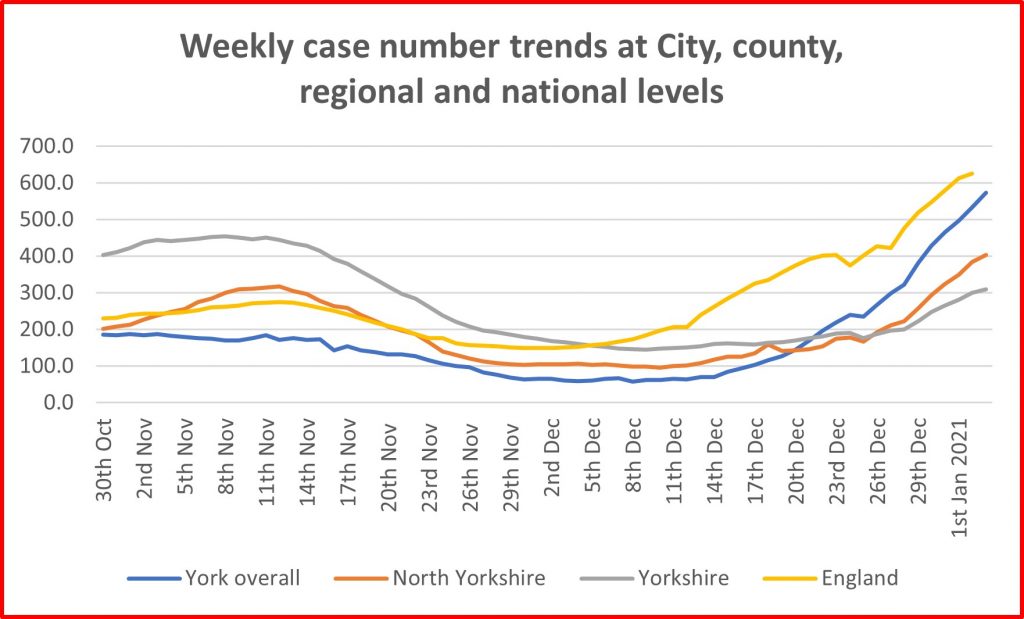
York Council commentary
The Council has updated it commentary on the pandemic
People with Covid Symptoms
• NHS Pathways/111 triages – as at 4.1.21 there had been 290 total covid triages in the CYC area in the last 7 days. The peak number of triages was 653 in the 7 day period to 20.9.20.
• As at 7.1.21, the Covid Symptom App estimates 1,282.6 per 100,000 in York with symptomatic covid (responses from a sample of 4,828 people). This is higher than the previous peak rate of 1,116.3 on 31.10.20.
Diagnosed cases (Pillar 1&2 combined)
• As at 7.1.21 York has had 8,522 cases since the start of the pandemic, a rate of 4,046.2 per 100,000 of population. The cumulative rate in York is below the national (4,437.7) and regional (4,983.2) averages.
• The PHE ‘Exceedance’ rating compares the no. of new cases over a 14 day period with the previous 6 weeks and provides a RAG rating to indicate if the previously observed trend in the no. of new cases is worsening. The latest rating for York (4.1.21) is Red.
• The provisional rate of new Covid cases per 100,000 of population for the period 30.12.20 to 5.1.21 in York is 595.9 (using data published on Gov.uk on 7.1.21).
• The latest official “validated” rate of new Covid cases per 100,000 of population for the period 27.12.20 to 2.1.21 was 532.7. The national and regional averages at this date were 612.1 and 300.8 respectively (using data published on Gov.uk on 7.1.21).
• The rate of new Covid cases per 100,000 of population for the period 27.12.20 to 2.1.21 for people aged 60+ in York was 363.1. The national and regional averages were 412.6 and 216 respectively.
• As at 4.1.21, the latest 7 day positivity rate in York (Pillar 2 only) was 13.74%. The national and regional averages are 15.8% and 11.7% respectively. The breakdown for York over the last 7 days by type of test is 1,287 positives out of 7,001 lab based (PCR) tests (18.4%) and 41 positives out of 2,261 rapid (lateral flow) tests (1.54%) Source: NHS Digital
• As at 5.1.21, the latest 14 day positivity rate in York (Pillar 1 and 2 PCR tests combined) was 16.5%. The national and regional averages were 17.8% and 12.8% respectively. The breakdown for York over the last 14 days is a 6.8% positivity rate for Pillar 1 tests and a 18.6% positivity rate for Pillar 2 PCR tests. Source PHE
• As at 7.1.21 York University reported 39 individuals within the University community who were currently self-isolating because they have had a positive COVID-19 test. The peak number was 331 on the 19.10.20.
Contact Tracing
• Since 28.5.20 a total of 7,464 laboratory confirmed CYC Covid cases have been uploaded into the NHS Test and Trace system and 6,556 of the cases have been completed (87.8%). 19,080 ‘contacts’ have been identified and 13,356 of these have been completed (70%). Source: PHE Report.
• Local Tracing of Cases: Between 22.10.20 and 1.1.21, 456 ‘actionable’ positive COVID-19 CYC cases have been referred to the local contact tracing service. 442 of the referrals (96.9%) have been actioned and 14 are still ‘in progress. Of the referrals actioned, 315 were successful and 113 were unable to be reached via phone or home visit, but guidance leaflets were posted where possible.
Cases in Residential Settings / Schools
• As at 7.1.21 there were 14 care homes in the CYC area with confirmed Covid-19 infection (at least 1 case of either a staff member or resident).
• The latest ‘outbreak’ (2+ cases) in a residential care setting in York was reported by PHE on 7.1.21 (1 home).
• In the 7 days up to 3.1.21 there were 104 children of primary and secondary school age who tested positive (across 40 different schools).
COVID Bed Occupancy in York Hospital
• As at 6.1.21 there were 71 confirmed Covid-19 patients in General and Acute beds. The previous figure on 6.1.21 was 66
• As at 6.1.21 there were 6 confirmed Covid-19 patients and 1 suspected Covid-19 patient in the Intensive Treatment Unit. The previous figures on 5.1.21 were 5 and 1 respectively.
• As at 6.1.21 there had been 0 patients admitted with suspected Covid-19 and 6 with confirmed Covid-19 in the previous 24 hours.
Recovery from Covid-19
• Between 13.4.20 and 20.12.20, 276 CYC residents had recovered and been successfully discharged from York hospital after needing NHS care for symptoms linked to covid-19 infection. 12 people were discharged in the most recent week.
R Number
• The ‘R’ value (the number of people that one infected person will pass on a virus to, on average) for the North East and Yorkshire area on 23.12.20 was estimated to be in the range 0.9 to 1.1. The previous estimate was (0.9 to 1.1) on 18.12.20.
Vaccinations
• Local data on the number of vaccinations completed is not currently available. At a national level, NHS England reported that between 8.12.20 and 3.1.20, 1,092,885 first dose and 19,981 second dose vaccinations had been administered.
Deaths
The two sources about deaths from Covid-19 at LA level are ONS data and local registrar data. They are derived from the same source (civil registration data). ONS data is more comprehensive as it includes deaths of York residents which have occurred and been registered outside York. Local registrar data is useful as it provides a breakdown by age and gender. The most recently available data is summarised below:
• ONS weekly data: For deaths occurring up to 25th December 2020 and registered up to 2nd January 2021, 218 Covid-19 deaths were recorded as having occurred for CYC residents (109 in hospital, 91 in care homes, 12 at home and 6 in a hospice). The number of deaths per 100,000 of population in York is 103.5 which is lower than the national average of 130.56. There have been 46 Covid-19 deaths of CYC residents reported by ONS in the last 12 weeks (Weeks 41 to 52).
• ‘Excess’ deaths – all causes (ONS). Between week 2 and week 52 there were a total of 142 ‘excess deaths’ in York compared with the average weekly numbers for 2014-2018. The breakdown over the year so far is: 18 fewer deaths in weeks 2-14, 210 more deaths in weeks 15-21 (when covid deaths were at their peak) and 50 fewer deaths in weeks 22-52.
• Local Registrar data: In the weekly data received on 4.1.21 (for deaths occurring up to 30.12.20), a cumulative total of 216 deaths of CYC residents where COVID-19 was mentioned (confirmed or suspected) on the death certificate, have been registered. The average age of the people who died was 81.8, with an age range of 44-104. The age profile of those dying in York is older than the national average. 106 of the 216 were male (49.1%), less than the national average (55.3%). 83 people (38.4%) died in nursing /care homes; (the national average is 25.39%). In addition 18 people (8.3%) who normally resided in nursing/care homes in the CYC area, died in hospital.


